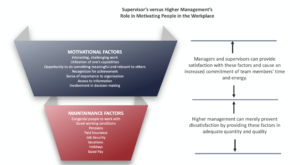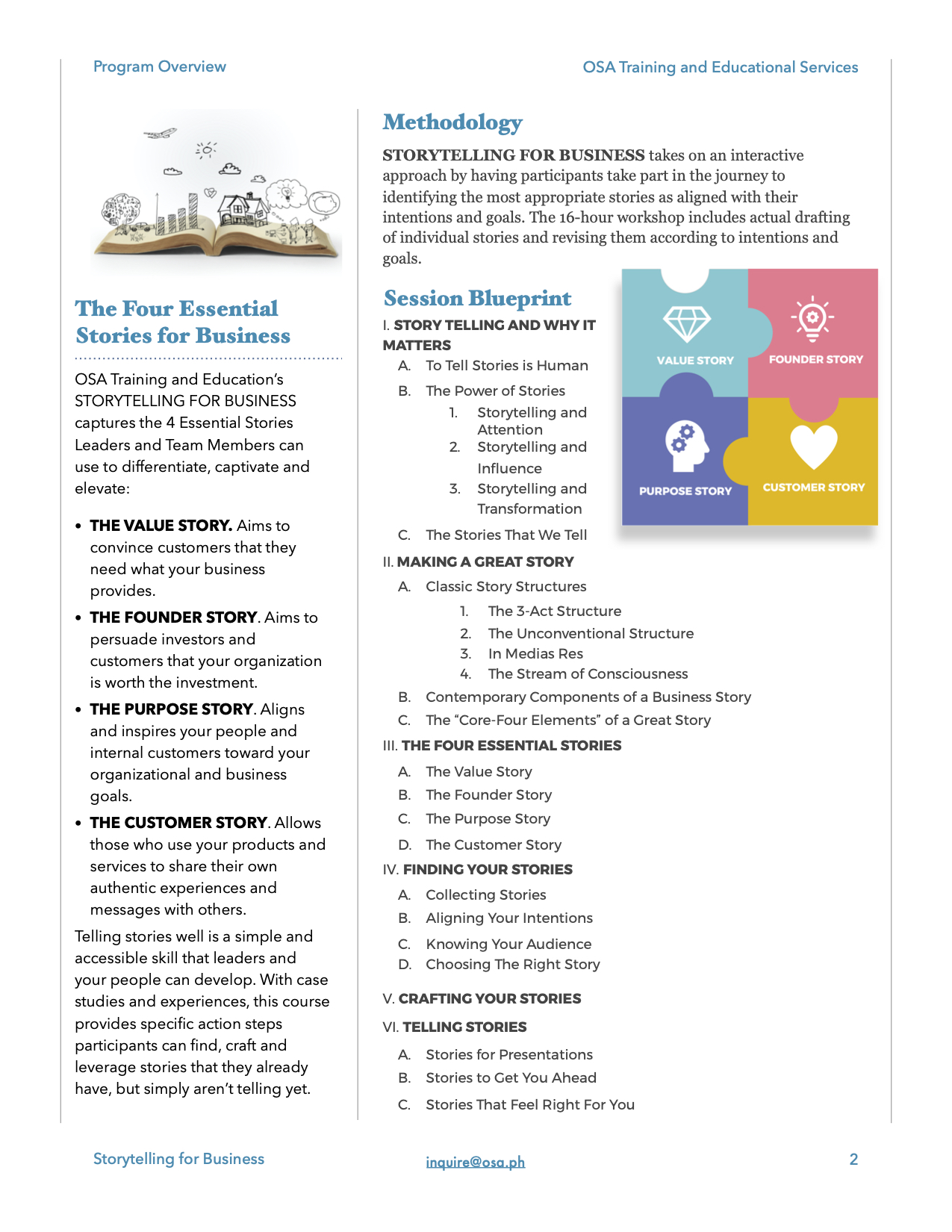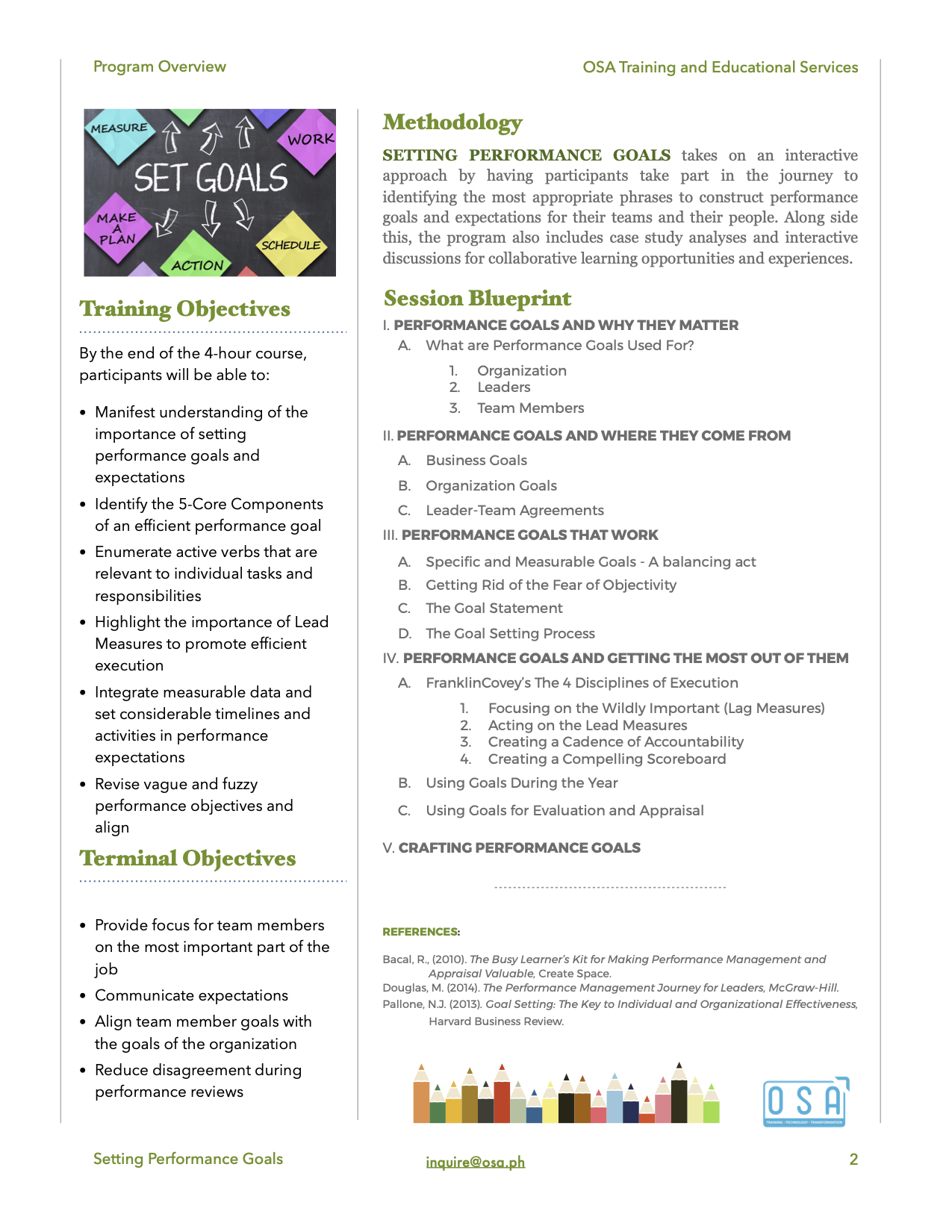One noted behavioral scientist, Frederick Herzberg, in his 2-Factor Motivation Theory (1959) made a distinction between job dissatisfaction and satisfaction.
He argues that Satisfaction for an employee comes from truly motivating factors such as interesting and challenging work, utilization of one’s capabilities, opportunity to do something meaningful, recognition of achievements, and responsibility for one’s own work.
Dissatisfaction occurs when the following factors are not present on the job: good pay, adequate holidays, long enough vacations, paid insurance and pensions, Good working conditions, and congenial people to work with.

Herzberg’s 2-Factor Motivation Theory
Herzberg bases these definitions on what is now known as the 2-Factor or the Motivation-Hygiene Theory. He says that every human being has two motivational tracks: (1) a low-level aspect, which is animal in nature and bent only on surviving, and (2) a higher-level aspect, uniquely human and directed toward adjusting to oneself.
Herzberg labels the first set of motivations hygiene or maintenance, factors. We need to satisfy them, he reasons, to keep alive people try to avoid pain and unpleasantness in life; they do the same on the job.
The satisfaction of these needs provides only hygiene for people. These factors physically maintain the status quo, but they do not motivate. If they are not present in the workplace, an employee will be dissatisfied and we look for a job elsewhere that provides these factors. But the employee will not work harder just because these factors are given to him or her. Said another way, A general pay increase may keep employees from quitting but it will rarely motivate an employee to work harder.
So how can supervisors provide the kind of satisfaction that motivates team members?
Herzberg feels that those job factors that provide genuine and positive motivation should be called satisfiers (motivators).
Without splitting hairs, we can see that generally, the company must provide the factors that prevent dissatisfaction. The supervisor tends to provide the factors that satisfy. Few supervisors can establish the basic periods for the organization.
Yet, almost all supervisors can motivate. For example, the supervisor can provide an employee with a specific, challenging goal: “Not many people can pack more than 200 cartons an hour. If you can pack 220 today, you will be a great asset to this Department.”
Similarly, a supervisor can let an employee know that the work he or she is doing is appreciated: “My manager asked me today who it was that prepared these urgent reports. I was pleased to tell her that you did!”
A leader can also help to make work more interesting by making suggestions, such as, “Why don’t we take 15 minutes later this afternoon to see whether we can find a way to break the monotony in your job?”
Finally, leaders can always extend responsibility by saying to an employee, “Beginning today you will make the decision as to whether off-grade products should be reworked or thrown away? If you make an occasional mistake, don’t worry about it in that area your judgment is every bit as good as mine.”
By looking at Herzberg’s theory of motivating people, leaders will be able to know how to effectively connect, build relationships and encourage their people to give their best in the workplace.
As we realize that maintenance factors such as benefits, security, working conditions and a fairly good pay can only do so much, we can maximize motivation and ultimately, performance, by having our team members explore their uniquely human needs to achieve greater through involvement, appreciation, and sense of importance in the workplace.
REFERENCES Herzberg, Frederick; Mausner, Bernard; Snyderman, Barbara B. (1959). The Motivation to Work (2nd ed.). New York: John Wiley. Herzberg, Frederick (January–February 1964). "The Motivation-Hygiene Concept and Problems of Manpower". Personnel Administration (27): 3–7. Hines, George H. (December 1973). "Cross-cultural differences in two-factor motivation theory". Journal of Applied Psychology.
We all have favorites: that’s human nature. But exhibiting favoritism in the workplace, especially among leaders, is the perfect recipe for causing difficult behaviors in others. As leaders, we must appear fair-minded and even-handed in our management of others, so as to maintain our credibility.
Though let’s face it – it is difficult to step away from a subjective view of our team members and deal with them as equals, and it is often in asking questions that we start to display our biases towards and away from our teams.
What we say and what we actually mean may be rather different. For example, any of us will exaggerate to emphasize a point or generalize based on something specific, or probably omit information, simply because we assume that the other person knows more than they actually do or slightly twist the truth because it suits our purposes and then believes the fabricated version.
Linguistics – the science of language, says that there are two types of language structures. The Surface Structure, which are the words we actually utter and the Deep Structure, which is the real meaning of we say.
Imagine the Surface Structure as the surface of the sea, while the Deep Structure is the sea bed.
The art of great questioning is to reconnect the surface (what is said) with the sea bed (what is actually meant). When you are dealing with difficult behavior, you need to work as far as possible with the facts. That’s not to discount emotions, which also play a part. But if you can quickly establish the facts, you will have something more tangible to work with.
The easiest way to get to the heart of the issue is to listen for three things:
- Generalizations
- Deletions
- Distortions
Each of these is common in speech. When you hear any of these surface-level statements, you have something to manage.
We will look into each of the areas in the coming weeks.
(to be continued)
Williams, E. (2012). Tips techniques ideas principles & strategies to turn difficult: managing difficult conversations. Place of publication not identified: Scholar Uk. Stone, D., & Heen, S. (2015). Thanks for the feedback: the science and art of receiving feedback well. London: Portfolio Penguin. Trask, R. L. (1999). Key concepts in language and linguistics. London: Routledge.
Why don’t employees act the way you wish they would? The answer will take a long time. But if what you are really asking is, “why do people act in such unpredictable ways?” the answer is simple: People do as they must. Their actions, which may look irrational to someone who doesn’t understand them, are in reality very logical.
If you could peer into people’s backgrounds and into their emotional makeup, you’d be able to predict with startling accuracy how one person would react to criticism or how another person would act when told to change over to the second shift.
Like a dog who’s been scratched by a cat steers clear away from all cats. Employees who have learned from a manager that the only time they are treated as human beings is when the workload is going to be increased will be on the defensive or cautious when a new boss tries to be friendly. To the new leader, such team members’ actions may look absurd, but for them, it’s the only logical thing to do.
People behave differently because of their uniquely different backgrounds and personalities.
So as it goes, each person is the product of parents, home, education, culture, social life, and work experiences. Consequently, when leaders deal with their team members, they are dealing with people who have brought all their previous experiences to the job.
Thus, each person is different. Each is a distinct individual. In detail, one’s reactions will be different from anyone else’s. But to understand human relations, we must first know why people do things before you can predict what they will do.
Say for example that Marvin dislikes his job because it requires a certain level of concentration, you can make a considerable guess that you will find more resistance from him when you offer another job that requires more complex tasks. Or if Jane, who is known to be a great people-person, a leader can predict that it will hard for her to take on roles in an isolated area.
The important tool in dealing with people is the recognition that although what they do is likely to differ, the underlying reasons for their doing anything are very similar. These reasons are called motives or needs.
So what determines personality? Well, just about anything. An individual’s personality cannot be pigeonholed as pleasant or outgoing or friendly or ill-tempered or suspicious or defensive. An individual’s personality is the total of what the person is today.
Each person’s personality is uniquely different from anyone else’s. It results from his/her own nature and nurture like schooling or lack of it, neighbors, peers, work and play experiences, parents’ influences, religion, etc.
From these influences, people learn to shape their individuality in a way that enables them to cope with life’s encounters, with work, with living together, with age, with success and failure. As a result, personality is the total expression of the unique way in which each individual deals with life.
Having laid down these facts about individualities and varying personalities in the workplace, leaders need to learn how to effectively delve deeper into each of their team member’s motives and wants. They may vary depending on each’s personalities and preferences, but as soon as the leader identifies and embraces these aspects and aligns motivations with his/her people, motivation follows.
References: Giuliani, R. W., & Kurson, K. (2007). Leadership. London: Sphere. Littauer, F., & Sweet, R. (2011). Personality plus at work: how to work successfully with anyone. Grand Rapids, MI: Revell. Maslow, A. H., Stephens, D. C., & Heil, G. (1998). Maslow on management. New York: Wiley.




